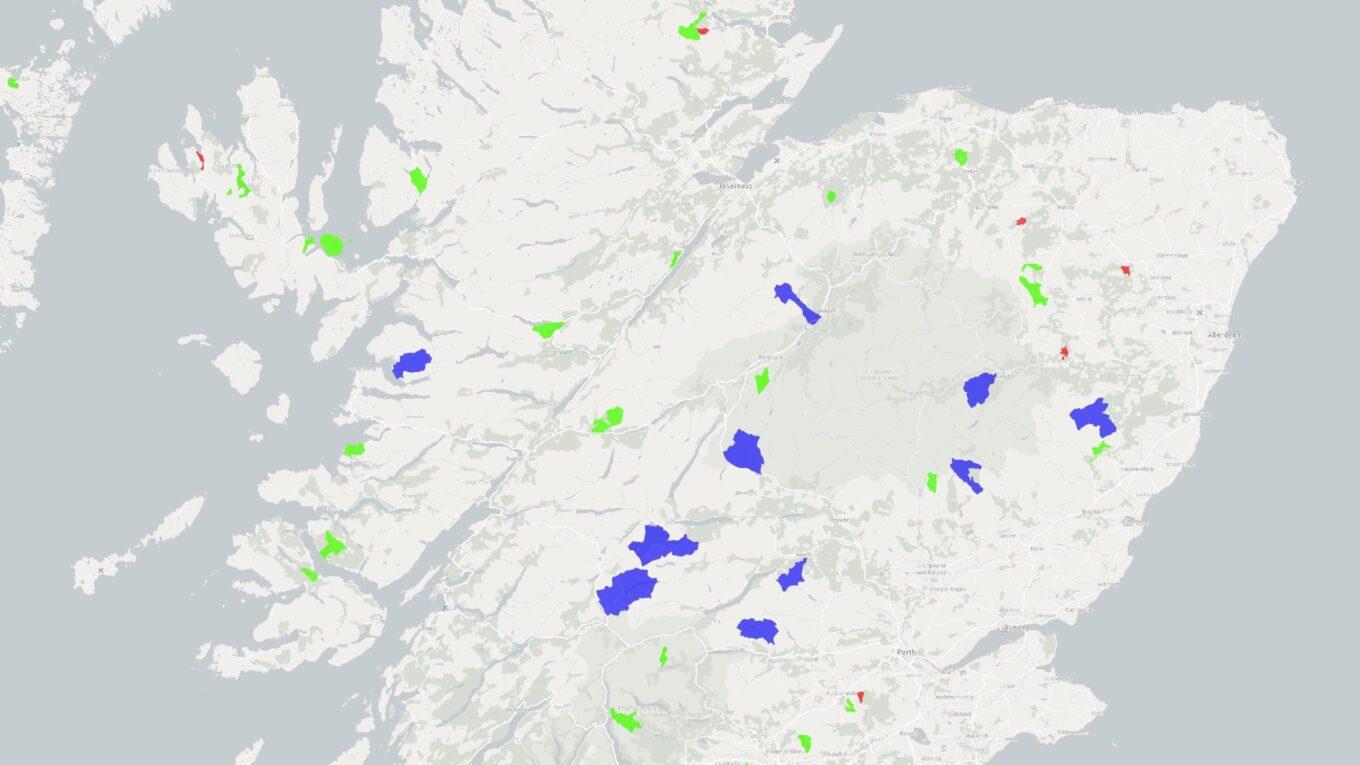Large-scale Rural Land Sales 2020 – 2022
Today, I publish a report analysing large-scale land sales or rural land during 2020 – 2022. The analysis is my contribution to ongoing efforts to better understand the land market and is derived from date collected as part of the Who Owns Scotland project.
The report provides a comprehensive analysis of all rural land sales during 2020 – 2022 of landholdings larger than 500 ha as well as sales of smaller parcels where the owner in aggregate owns more than 500ha.
During this period there were a total of 78 such sales totalling 102,758 ha of land. Of these sales, 11 (50,596 ha) were of holdings over 3000 ha in extent acquired for a total of £83 million for the sales that disclosed the purchase price (the report is critical of a recent trend in narrating the consideration paid as “in implementation of missives”).
The majority (58%) of the land acquired during this period was by buyers who already owned land. Of the sales of land where the price disclosed is over £10 million, all of the buyers are engaged in forestry and nature finance underlining the trend in recent years towards the financialisation of Scottish rural land, a trend being accelerated by the Scottish Government’s mission to attract City of London investment for “nature finance”. (see previous blog)
Prominent among the buyers of such land during this period was Gresham House, the London-based asset management company recently acquired by Seed Bidco Ltd, based in Guernsey and controlled by funds advised by Searchlight Capital LLP in New York. Provisional analysis (a fuller analysis will be published later this year) shows that Gresham House is now the fifth largest private landowner in Scotland owning an astonishing 53,783 ha (132,989 acres) of land in 161 separate landholdings, none of which individually exceeds 3000 ha. The Scottish National Investment Bank agreed a £50 million investment in a Gresham House forestry fund in 2021
The Scottish Government is planning to introduce a land reform bill to Parliament shortly. It is likely to contain a series of new duties on the owners of large landholdings (Scottish Ministers themselves are of course the largest landowner in Scotland). The proposed threshold defining large-scale is 3000 ha and some have argued that it should be reduced to 500 ha.
This report shines a light on the land sales that have taken place of landholdings above those thresholds including by owners who exceed the threshold in aggregate (such as Gresham House).
A fuller analysis of who owns Scotland will be published later this year updating the figures I published in 2010 in The Poor had No Lawyers. Further analysis of the 2023 land market and of the market in smaller landholdings will also be published if time and resources allow.
Download the report here Rural Land Sales 2020 – 2022 (revision 2 – Oct 2024)

Why did the Scottish NATIONAL Investment bank fund land purchases. Land already exists so it doesnt seem like an ‘Investment’ to me ie creating something ‘new’ with a view to profit.